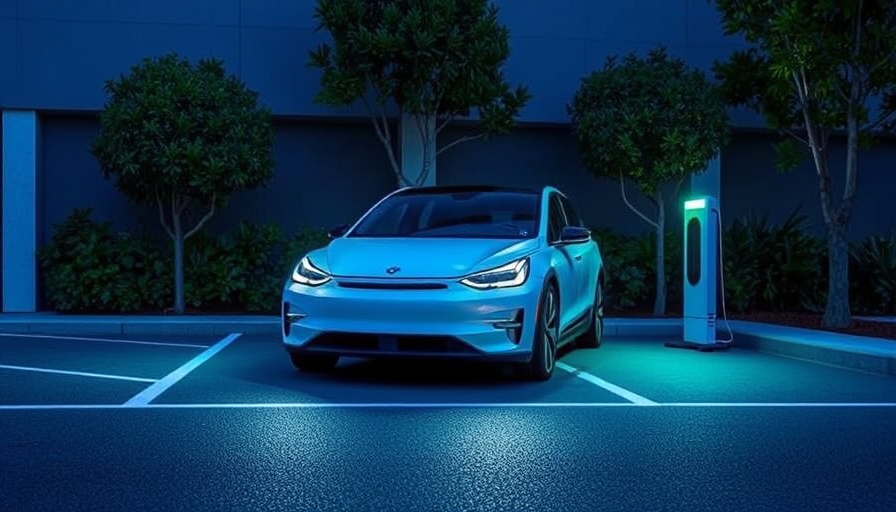
Australia's Electric Vehicle Market: A Steady Climb
In September 2025, the Australian electric vehicle (EV) market maintained a notable share of 15.7% of total new car sales, with over 11,500 battery electric vehicles (BEVs) and nearly 4,500 plug-in hybrid electric vehicles (PHEVs) recorded. This achievement is a reflection of the growing acceptance and integration of electric vehicles into the broader automotive landscape. With a total of around 102,000 new vehicles sold, the data indicates an encouraging trend towards electrification in a market that is historically dominated by internal combustion engines.
The Pulsating Influence of Chinese Manufacturers
Interestingly, Chinese manufacturers are significantly reshaping the Australian EV landscape. Currently, they account for 80% of BEV sales, with brands such as BYD and MG leading the charge. BYD has established a strong presence, marking its spot in the top ten automotive suppliers in Australia. Notably, the BYD Sealion 7, which is positioned as the largest BEV SUV in its category, ranked as the 8th best-selling vehicle in September. This trend is consistent with global patterns where Chinese manufacturers are asserting themselves in EV markets worldwide.
The EV Penetration—A Long Way to Go
Despite the traction, BEVs only represent roughly 8% and PHEVs about 4% of the market year-to-date, indicating a larger transition still on the horizon. Experts project that half of all cars sold in Australia within the next decade will have to be electric to meet emissions reduction targets set forth by the Climate Change Authority (CCA). In a broader vision, forecasts suggest that by 2035, electric vehicles could constitute up to 85% of all new car sales. Chris Jones of the Australian Electric Vehicle Association has termed this goal as not just achievable but necessary given the context of climate action.
Government Action and Infrastructure Challenges
Addressing infrastructure hurdles remains critical. The chief executive of the Federal Chamber of Automotive Industries, Tony Weber, calls for enhanced charging infrastructure rather than increased subsidies. He emphasizes that for EV adoption to flourish, companies must face competition that encourages price reductions and consumer choice. Recently, Hyundai reversed its stance on price competition and introduced significant price cuts on their electric models. This competitive landscape could catalyze greater consumer engagement.
HEV Options and Consumer Preferences
As of yet, fully electric utes, which are pivotal in the Australian market, are remaining scarce. However, the anticipated launch of BYD's Seagull, touted to be cost-effective, could help bridge this gap, with expectations that it will be priced under the base model Dolphin. This price point, combined with its compact size, could have widespread appeal among consumers looking to transition from traditional vehicles to electric options.
Electric Vehicles—The Road Ahead
As the data shows, the top models in September included the Tesla Model Y, BYD Sealion 7, and Tesla Model 3. This continuity in popularity illustrates that existing players like Tesla continue to resonate with consumers while newer contenders like BYD carve out a distinct niche.
Market dynamics suggest that Australia's transition towards electric vehicles is in a pivotal moment, with the potential for significant growth driven by a growing range of affordable and appealing models. As the infrastructure catches up and consumer awareness grows, the expectation is that sales will snowball beyond the current plateau.
A Call for Comprehensive Strategies
The challenge remains: alongside endorsing electric vehicles, there needs to be an ongoing dialogue about enhancing public transport alternatives and diversified electrification strategies. As highlighted by industry experts, merely switching passenger vehicles to electric will take time; a broader approach to transportation emissions is crucial. Hence, integrating cycling, public transport, and other sustainable practices alongside electrification is essential for a sustainable transportation future.
As we step into this new era of electric mobility, further developments in technology, pricing, and infrastructure will dictate the pace and success of this transition in Australia.
 Add Row
Add Row  Add
Add 




Write A Comment